Letters from Lodi
An insightful and objective look at viticulture and winemaking from the Lodi
Appellation and the growers and vintners behind these crafts. Told from the
perspective of multi-award winning wine journalist, Randy Caparoso.
Explaining the Lodi growers' Save the Old campaign
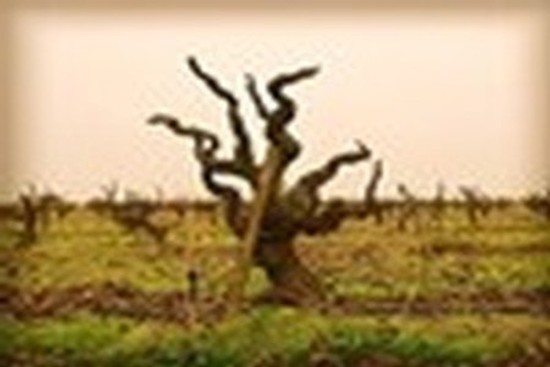
Ancient vine Zinfandel in Lodi's Peirano Estate, first planted in the 1890s
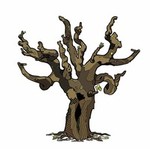 "Don't it always seem to go," goes that favorite old song, "that you don't know what you've got 'til it's gone."
"Don't it always seem to go," goes that favorite old song, "that you don't know what you've got 'til it's gone."
A couple of weeks ago the Lodi Winegrape Commission launched its Save the Old campaign. Read all about its Mission on savetheold.com. It's all about stimulating consumer, wine trade, and media interest in wines made from vineyards originally planted over 50 years ago, in the mid-1960s or earlier. This period of time was when it was still not unusual, at least in Lodi, to plant grapes as free-standing, untrellised vines, many of them on their own natural rootstocks. In fact, the vast majority of Lodi's old vines are ungrafted, and there are more of these old vines in Lodi than anywhere else in California.
First, some background: The people behind this campaign are the Lodi growers themselves, who back in 1991 formed the Lodi Winegrape Commission to self-fund marketing, grower education, and viticultural research to improve the quality of their grapes and, basically, to sell more of them to the rapidly growing wine production industry.
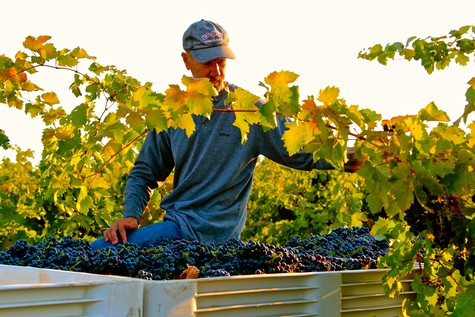
Todd Maley, descended from Andrew Harshner who arrived in Lodi in the late 1860s, harvesting old vine Zinfandel in his family's Wegat Vineyard
Lodi has always been an agricultural region. The vast majority of Lodi grapes are grown by hard-working farmers, over 750 of them, many with family roots in the region going back to the 1800s. Even today, the region's 85 or so home-based wineries represent less than 2% of the bonded wineries in the state. Yet Lodi grows over 20% of California's yearly grape crush (almost no grapes for the table or raisin markets are grown in Lodi).
Ergo: When you espouse Lodi's Save the Old campaign, you are helping farmers. This is a campaign to get you to care about their old vines. Yes, for economic reasons important to these farmers, but also because these vineyards are an important part of Lodi's heritage. Think of old vines as family heirlooms — things you absolutely cannot put a price on.
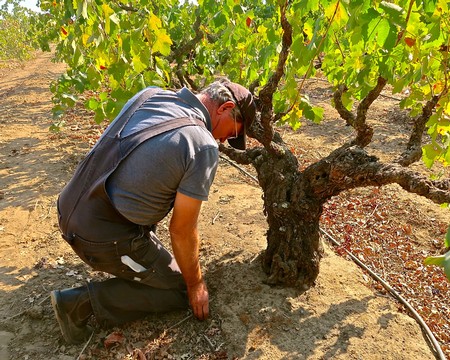
Alquimista winemaker Greg La Follette paying homage to 131-year-old Zinfandel in Jessie's Grove's Royal Tee Vineyard
Lodi's oldest existing vineyard, the Bechthold Vineyard — 25 acres of own-rooted Cinsaut, planted in 1886 —was exactly like that: For much of its 134 years its grapes sold for barely as much, and often less, than what it cost to farm it. Sounds crazy, but it's true. Yet the family that originally planted it, and still owns it today, persevered and kept it in the ground until it was finally "discovered" by a few hoity-toity wineries. Today its grapes are selling for approximately four and a half times more than just 20 years ago, and it goes into wines considered to be prestige bottlings, sold from Honolulu to New York. Yes, "save-the-old" campaigns have been known to work. Miracles happen.
Here is the situation: Lodi's old vine plantings consist primarily of Zinfandel, although there is also a small number of acres of pre-1960s plantings consisting of grapes like Carignan, Cinsault, Grenache, and Alicante Bouschet. But to give you an idea of the dwindling amount of Zinfandel grown in the region, here are some numbers supplied by the USDA's annual California Grape Acreage Report:
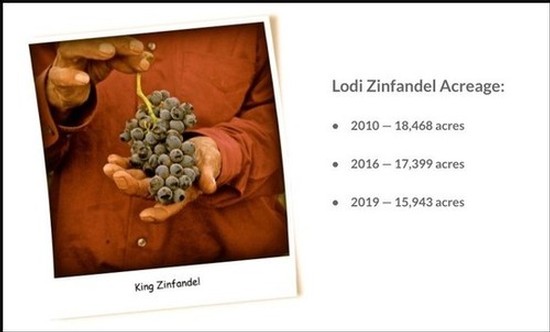
We do not yet have the 2020 figures reflecting the amount of Lodi Zinfandel acres pulled up since the fall of 2019, but there is every indication that it will bring the total existing acreage to below 15,000. It's been a rough decade, especially the past two years, for the fortunes of Lodi Zinfandel.
Wherefore Lodi Zinfandel's disappearing act? White Zinfandel is not nearly as popular as it was 20, 30 years ago. Sales of premium quality red Zinfandel, selling for $18 to $40 a bottle, have slightly increased over the past five years; but sales of value-priced Zinfandel reds (less than $12/bottle) have taken a dip.
Therefore, over the past few years, Lodi growers have been slowly transitioning into a premiumization of their viticultural practices to meet the needs of the segment of the Zinfandel market that is still growing, but this is not a process that happens overnight. Wine grape farming is patience, long-term planning, and perseverance.
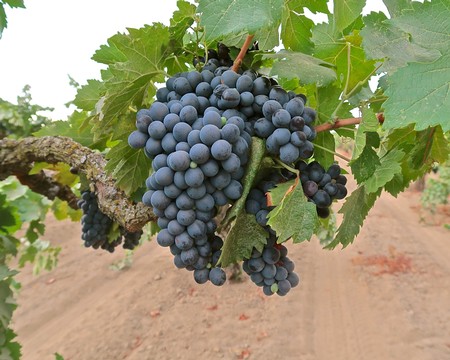
Cinsaut clusters in 134-year-old Bechthold Vineyard
There is also competition: The market for premium California Zinfandel is also supplied by growers in Sonoma County, Napa Valley, the Sierra Foothills, Mendocino, and Paso Robles. All the same, prestige Zinfandel producers such as Turley Wine Cellars, Bedrock Wine Co., and Ravenswood have been sourcing grapes from Lodi for years. Even Ridge Vineyards, California's original handcraft Zinfandel specialist, has been quietly buying ancient vine Lodi Zinfandel for their blends in recent years. Lodi's old vines are respected.
The gravitation towards premiumization, alas, is not happening fast enough. In today's economic climate, many growers cannot sustain consecutive vintages where grapes are sold for less than the cost to farm or vintages where grapes do not sell at all. Lodi is not the only region in the U.S. currently undergoing an economic course correction during which grapevines, old and young, are being plowed under. But when it happens to older vineyards of heirloom value, it can't help but sing.
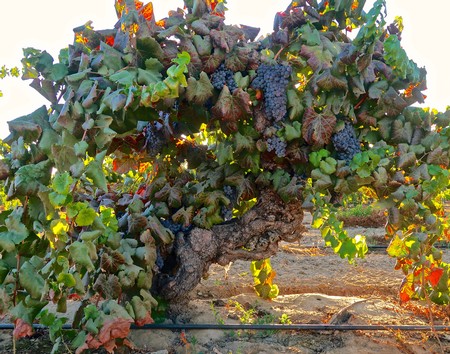
Rauser Vineyard Alicante Bouschet, planted in 1909
Hence, the Save the Vines campaign. Sure, you can take the attitude that growers should do what they need to do and not attach sentimental value to vineyards planted by their parents, grandparents, or great-parents. But here's the thing: Many of Lodi's growers don't feel that way. Sure, they're pulling up old vineyards that are no longer economically viable, but many of them would prefer not to. They would prefer that wine lovers, or the "influencers" who make the most noise in the wine world, appreciate these old vine wines a little bit more so that they can continue to farm these vineyards planted by their parents, grandparents, and great-grandparents.
Put it this way: Once old vines are gone, they're gone. It takes another 50 or 100 years for a new vineyard to become a 50-year-old or 100-year-old planting. That's very possible, but keep in mind that the vast majority of new vineyards are not done in the old way — as free-standing, spur-pruned vines held up by nothing but a single stake. It's these kinds of vines that are more likely to remain productive after over 50 years. On the other hand, the typical trellised vineyards of today, being planted all over the world, are routinely pulled up and replanted after 25 to 35 years. The average age of vines in Napa Valley, for example, is well less than 20 years. Today's new vineyards, in other words, stand very little chance of becoming "old vines." When you see old vines disappear, you are watching history disappear.
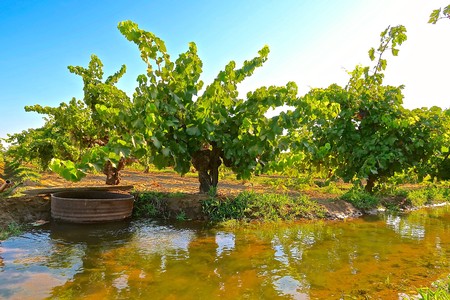
Furrow-irrigated Grenache in Mokelumne River-Lodi's Manassero Vineyard, first planted in the 1940s
But if you care, you can help. Think and talk "old vine." The term may be an unregulated one, but keep in mind that when you see "old vine" and "Lodi" together on a label, you're basically looking at wine from a vineyard (or blend of vineyards) planted before the mid-'60s because that's when the bulk of them were planted.
We do encourage you to visit the Lodi growers' Save the Old website. It will give you tons of information and a persuasive argument for supporting the cause. If you want to geek out, you can even find a detailed list and descriptions of many of Lodi's oldest, most revered vineyards. Also on this page, you will be able to
RSVP to a Lodi Old Vine Wines Facebook LIVE Virtual Tasting & Discussion
November 10, 2020, 4:30 PM PDT — A free public tasting with a panel of Lodi growers and winemakers, with limited quantities of the included wines available for purchase online.
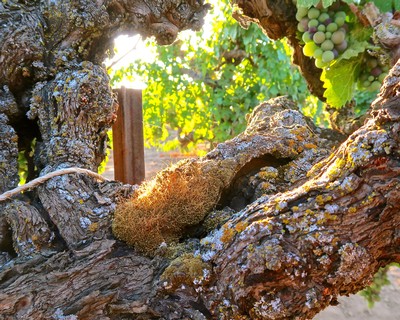
Dried moss on ancient (well over 100 years old) Zinfandel on Lodi'w west side
Order an Old Vine Wines 3-Pack
Sip by sip, enjoy a rare taste of Lodi’s rich viticultural history in this three-bottle package of single-vineyard, old-vine wines (quantities limited).
Order Save the Old Merchandise
Indulge in limited-edition super soft, tri-blend tees, ceramic mugs, and posters featuring a custom old vine illustration by Danilo Agutoli.

Donate to the Historic Vineyard Society
HVS is a non-profit organization (not associated with the Lodi Winegrape Commission) dedicated to the preservation of California’s historic old vine vineyards. Your donation helps support them through education, research, and events.
Sign up for free Save the Old updates
Subscribe to receive quarterly updates and news on Lodi’s old vines and beyond.
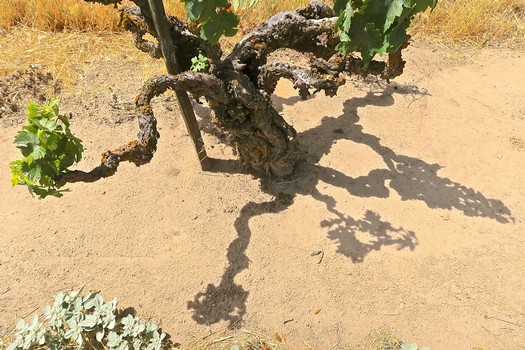
Spindly shadow of 119-year-old Zinfandel on Mokelumne River-Lodi's west side